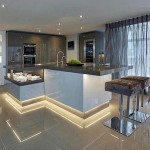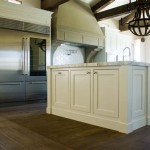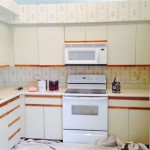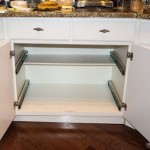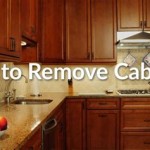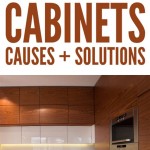Essential Aspects of DIY Kitchen Cabinet Boxes
DIY kitchen cabinet boxes, the sturdy framework that supports your kitchen cabinetry, are fundamental elements that determine the durability and functionality of your kitchen. A well-built cabinet box ensures your doors and drawers operate smoothly, while also providing ample storage space and a solid base for mounting hardware.
Building kitchen cabinet boxes from scratch can be a rewarding and cost-effective undertaking, but it requires careful planning and attention to detail. Here are some essential aspects to consider when embarking on this project:
Materials
The choice of materials for your cabinet boxes significantly impacts their strength and longevity. The most common options include:
- Plywood: Known for its durability, dimensional stability, and moisture resistance.
- Melamine: A scratch-resistant and moisture-resistant material often used for cabinet interiors.
- Particleboard: An affordable option with moderate moisture resistance, but less durable than plywood.
Construction
The construction methods used to assemble your cabinet boxes are crucial for their integrity. Essential techniques include:
- Dado joints: Recesses cut into the sides and top of the cabinet box to accommodate the shelves and back panel.
- Pocket hole joinery: Using a specialized jig to create angled holes and drive screws for a strong and concealed joint.
- Glue: Applying wood glue to all joints significantly strengthens the cabinet box.
Dimensions
Accurate dimensions are essential for ensuring your cabinet boxes fit together seamlessly and correctly accommodate your doors and drawers. Consider the following aspects:
- Cabinet width and height: Determined by the size of your kitchen and the available wall space.
- Cabinet depth: Typically ranging from 12 to 24 inches, depending on the desired storage capacity and the appliances you intend to house within.
Assembly and Installation
Once your cabinet boxes are constructed, they need to be properly assembled and installed. This involves:
- Attaching the back panel: Installing a plywood or fiberboard backing for added stability and to prevent the cabinet from racking.
- Leveling and securing: Using shims or a level to ensure the cabinets are plumb and level before securing them to the wall studs.
Finishing
The finishing touches of your cabinet boxes can enhance their aesthetic appeal and protect them from wear and tear. Options include:
- Priming: Applying a primer before painting or staining to improve adhesion and prevent wood grain from bleeding through.
- Painting or staining: Customizing the appearance of your cabinets to match your kitchen decor.
- Adding decorative elements: Enhancing the visual interest with moldings, panels, or knobs.
By carefully considering these essential aspects, you can create DIY kitchen cabinet boxes that are both functional and visually appealing, forming the foundation for a stunning and practical kitchen.

Diy Upper Cabinet Boxes

Diy Upper Cabinet Boxes

Diy Upper Cabinet Boxes

Diy Upper Cabinet Boxes

10 Simple Ideas To Update Your Kitchen Cabinets Jenna Sue Design

Kitchen Base Cabinets 101 Ana White

How To Build Diy Kitchen Cabinets Dowelmax

30 Kitchen Cabinet Add Ons You Can Diy Family Handyman

How To Build Cabinet Boxes Built In Cabinets Building Kitchen

Diy Kitchen Cabinets Made From Only Plywood
Related Posts

